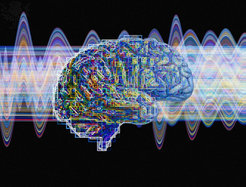Lifespan Neural Dynamics Group

Various subdisciplines within neuroscience have long shown that the brain is inherently dynamic and variable across moments at every level of the nervous system. Many researchers have typically conceived of variability as either (a) measurement error or (b) neural “noise,” a nuisance factor that presumably interferes with the efficiency of neural processes. With respect to ageing, the concepts of “noisy” and inefficient processing have been discussed since the 1950s (see Garrett, McIntosh, & Grady, 2014), but it is only comparatively recently that directly examining within-subject brain signal variability in vivo has been employed as a means of testing the notion of age-related neural noise. Perhaps surprisingly, neural variability may be highly functional for neural systems, indexing important benefits such as increased dynamic range and systemic flexibility/adaptability (cf. Garrett, Samanez-Larkin et al., 2013). Viewed from this perspective, it is possible to reframe brain ageing as a generalised process of increasing system rigidity and loss of dynamic range that manifests in reduced brain signal variability. The Lifespan Neural Dynamics Group (LNDG) tests this conceptualization by examining electroencephalographic (EEG) and functional magnetic resonance imaging (fMRI) brain signal variability and dynamics in relation to lifespan development, cognition, neurochemistry, network dynamics, and brain structure.
Key References
Kloosterman, N. A., Kosciessa, J. Q., Lindenberger, U., Fahrenfort, J. J., & Garrett, D. D. (2020). Boosts in brain signal variability track liberal shifts in decision bias. eLife, 9:e54201. https://doi.org/10.7554/eLife.54201
Kosciessa, J. Q., Kloosterman, N. A., & Garrett, D. D. (2020). Standard multiscale entropy reflects neural dynamics at mismatched temporal scales: What’s signal irregularity got to do with it? PLOS Computational Biology: 16(5): e1007885. https://doi.org/10.1371/journal.pcbi.1007885
Garrett, D. D., Epp, S. M., Kleemeyer, M., Lindenberger, U., and Polk, T. A. (2020). Higher performing older adults upregulate brain signal variability in response to feature-rich sensory input. NeuroImage, 217, Article 116836. https://doi.org/10.1016/j.neuroimage.2020.116836
Garrett, D. D., Nagel, I. E., Preuschhof, C., Burzynska, A. Z., Marchner, J., Wiegert, S., Jungehülsing, G., Nyberg, L., Villringer, A., Li, S-C., Heekeren, H. E., Bäckman, L., & Lindenberger, U. (2015). Amphetamine modulates brain signal variability and working memory in younger and older adults. Proceedings of the National Academy of Sciences USA, 112, 7593–7598. https://doi.org/10.1073/pnas.1504090112
For more references, please click here.
